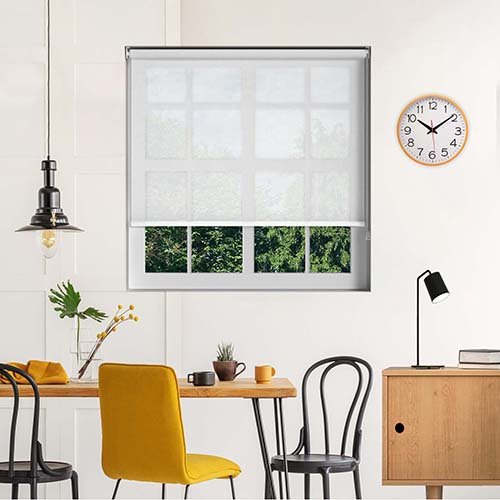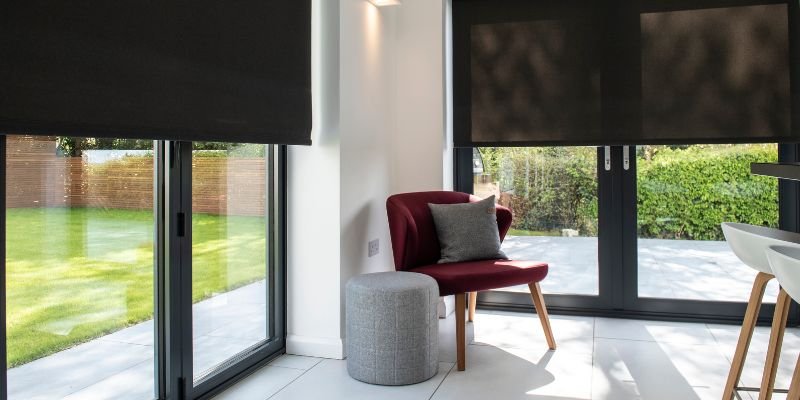What To Do When Your Cordless Roller Blinds Won't Go Up or Down

Cordless roller blinds are swiftly becoming a popular option for many homeowners. Not only are they brilliant at managing light, but they also reduce the risk of injury for small children and animals too. What makes them different from traditional roller blinds is the mechanism. And, while this makes them minimalist and smart, it is also the root of some confusion among many owners. The mechanism is hidden. Therefore, it’s harder to establish the cause of any issues you may experience. In this blog post, we’ll troubleshoot one of the most common queries we receive - What do I do when my cordless roller blinds won’t go up or down?

What are cordless roller blinds?
Let’s take a look at cordless roller blinds in more detail first. As the name suggests, these window coverings share many similarities with the ever-popular roller blind. They have the same overall design, being constructed from a single block of fabric that wraps around the head roller. When you want to expose the window more, you roll the blind up. When you want more privacy or light control, you roll it down.
The main difference between traditional and cordless roller blinds is how you operate them. Traditional styles have a pull cord that hangs from one side and can be used to roll the fabric up. Cordless models have an internal spring-loaded mechanism that sits within the body of the fabric. When you want to adjust them, you pull gently on the bottom of the fabric to release the lock before moving it to your desired position.
They are sleek, minimalistic, and ideal for homes with small children.
What rooms are they most suitable for?
Cordless roller blinds are primarily a product of increased awareness of the hazards caused by pull cords. Small children are naturally inquisitive - especially when something is hanging down directly in their eyesight. Pull cords can, very easily, become entangled around a child’s neck if they fall or become distracted during play. And, without constant supervision, this can lead to serious injury and even death. By EN13120, all of our roller blinds with cords are also supplied with either an easy-break chain connector or a child safety clip. The cords can be clipped away out of reach.
However, the safest route will always be to eliminate the pull cord, thereby eliminating the risk too. Cordless roller blinds do exactly this. By fitting the mechanism inside the fabric, you take away the need for pull cords and make a significantly safer window blind option. For this reason, these modern blinds are an ideal choice for bustling family rooms, such as the living rooms and dining rooms. They are also entirely safe for installation in nurseries and playrooms and, when chosen in blackout fabrics, promote good sleep health. And, in offices, these sheer or voile options allow you to optimise on natural light while keeping glare at bay.
What to do when they won’t go up or down?
Now, let’s get down to the troubleshooting part of our blog post. With traditional roller blinds, it’s normally easy to see if a cord has become knotted or if a section is tangled. You can quickly rectify this and get your blinds back to full working order. This becomes harder with cordless roller blinds. If you’re having trouble rolling your blind up or down, there are several common causes. And, the best part is that most of them require small adjustments to fix.
If your cordless roller blind won’t go up and down:
Check the internal springs
To draw the fabric up to your desired level, the internal mechanism uses springs. They lock the blind in place but also make it easier to move the frame up and down. If you’re having issues rolling the blind open, these springs may need to be ‘reactivated’. This normally happens if you haven’t used the blinds for some time - perhaps they’re in a room you rarely use or you’ve been away from the house.
To do this, attempt to lower the blind as far down as it will go. If you hit resistance, bring the fabric towards you slightly and give it a gentle tug. This should release any tighter springs and allow you to adjust the fabric once again. You can also gently move the fabric from side to side, rocking it until the springs begin to work again.
Check the friction clips
Within your spring-loaded mechanism, you have clips that manage the friction in your blind. Their job is to help the fabric roll tightly on the top rail and keep the mechanism working smoothly. You can remove these clips, if needed, to improve the fabric’s movement. If doing so, make sure to keep the clips somewhere safe, in case they need to be replaced. We highly recommend getting in contact before doing this to make sure you don’t cause any damage to the blinds.
Re-adjust the tension
The issue you are having could be down to a lack of appropriate tension. To fix this, remove one end of your cordless roller blind from its bracket. Spin the blind one way while ensuring the spring stays within the bracket. You will increase the tension and get it back to a suitable state.
Once you have done this a few times, clip the blind end back into the bracket and try to adjust the fabric once more.
If you try all of the steps above and are still having problems, we recommend getting in contact with the blind’s manufacturer. You could be experiencing a product default or may need additional support.
Here at Lifestyle Blinds, we have a team of highly experienced and professional blind experts who have supported many customers with troubleshooting enquiries. If you have purchased your cordless roller blinds for us and cannot get them to work properly, please do get in contact today and we will be happy to help.























































































